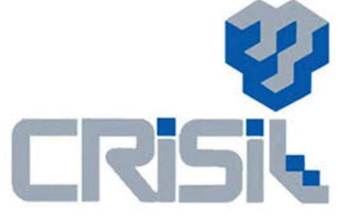
Capital goods, fertilisers most impacted sectors amid Red Sea trade disruptions: Crisil Report
MUMBAI : Sectors such as capital goods and fertilisers have been the most impacted amid the ongoing crisis around the Red Sea, a Crisil Market Intelligence and Analytics report stated while assessing the sectoral impact from the trade disruptions. Crude oil, pharma and shipping were in the list of medium impacted sectors while textiles and metals were the least affected in the line up.
The disruption comes in the backdrop of the Houthi rebels in Yemen attacking cargo ships plying the waters connecting Asia with Europe and the United States in a bid to stop Israel’s offensive against Hamas in Gaza. As a result, traffic is being forced away from the Suez Canal and redirected around the tip of Africa.
This is causing delays and driving up costs at a time when economies around the world are already grappling with concerns of resurgent inflationary trends.
Delving further on sector-specific analysis, the Crisil report said that in the case of the capital goods sector, a sustained disruption in trade routes, particularly one causing delays in the timely delivery of goods, holds the potential to significantly impact players. “The ripple effect of such disruptions extends to various facets of the industry, potentially leading to an undesirable inventory build-up. This accumulation can, in turn, exert pressure on the operational efficiency of engineering, procurement and construction companies operating in this sector,” it said.
It further added that the intricacies of supply chain management become more pronounced as delayed deliveries may contribute to a slowdown in the crucial process of order conversions along with shooting up of logistics costs.
In the case of fertilisers, the report assessed how the Red Sea conflict has impacted Middle East’s fertiliser exports to India. Alluding to reports on how the crisis has extended shipment timelines by nearly 15 days and hiked freight costs, Crisil highlighted that the import of the key fertiliser, muriate of potash (MOP), from Jordan and Israel has been majorly affected. “Israel constitutes 10-15% of MOP exports to India, while Jordan constitutes 25-30%. Though the Indian government has assured a sufficient buffer for fertilisers, MOP supplies from these countries will be affected if the situation persists for long,” the report added.
In the case of medium-impact sectors, crude oil has been affected given how India’s overall import of crude depends on Russia (37%), Iraq (21%) and Saudi Arabia (14%). “While the supply has largely remained unaffected, the current escalation has resulted in elevated freight and insurance costs. Furthermore, crude prices have started inching upwards consequent to the escalated geopolitical tensions. This is likely to impact incremental spreads observed by the oil marketing companies in the domestic market,” the report highlighted.
For the pharma industry, 50% of its revenue comes from export markets, with the US and Europe contributing majorly. While the US and Europe contributed 50% of the overall formulation exports, Europe alone contributed one-third of the overall bulk drug exports between April and November 2023. “Out of the overall exports, almost two third of pharma exports are by sea; with the Red Sea being the shortest route connecting Asia with Europe and North America, there could be some turbulence if the situation persists in the longer run. This may result in increased shipping surcharges and freight costs, which will eventually impact the margins of industry players,” it stated.
In its analysis of the shipping sector, the Crisil report mentioned that the overall impact of the situation has been positive to neutral on the shipping industry. This, it said, is in the context of how the elevated freight rates have more than compensated for the incremental operating costs and additional risk borne by the operators.
A spike in shipping freight rates have come about due to geopolitical issues in the Middle East and attacks on vessels sailing through the Red Sea. While container shipping freight rates globally are now 2.5-3.0 times higher than in early December 2023, spot rates for vessels transiting through the Suez Canal — particularly from Asia to Europe — have surged nearly five-fold. Also, rates from China to the US have more than doubled, it noted.
“The increase in global spot rates is also because of a shortage of available vessels at ports owing to unscheduled rerouting around the Cape of Good Hope, which is causing delays of up to two weeks,” the report said.
Sectors such as textiles and metals have been the least impacted so far. In the case of the textile sector, around three-fourth of the sector is oriented towards the domestic market while for metals too, 95% of the demand is met through domestic supply.
